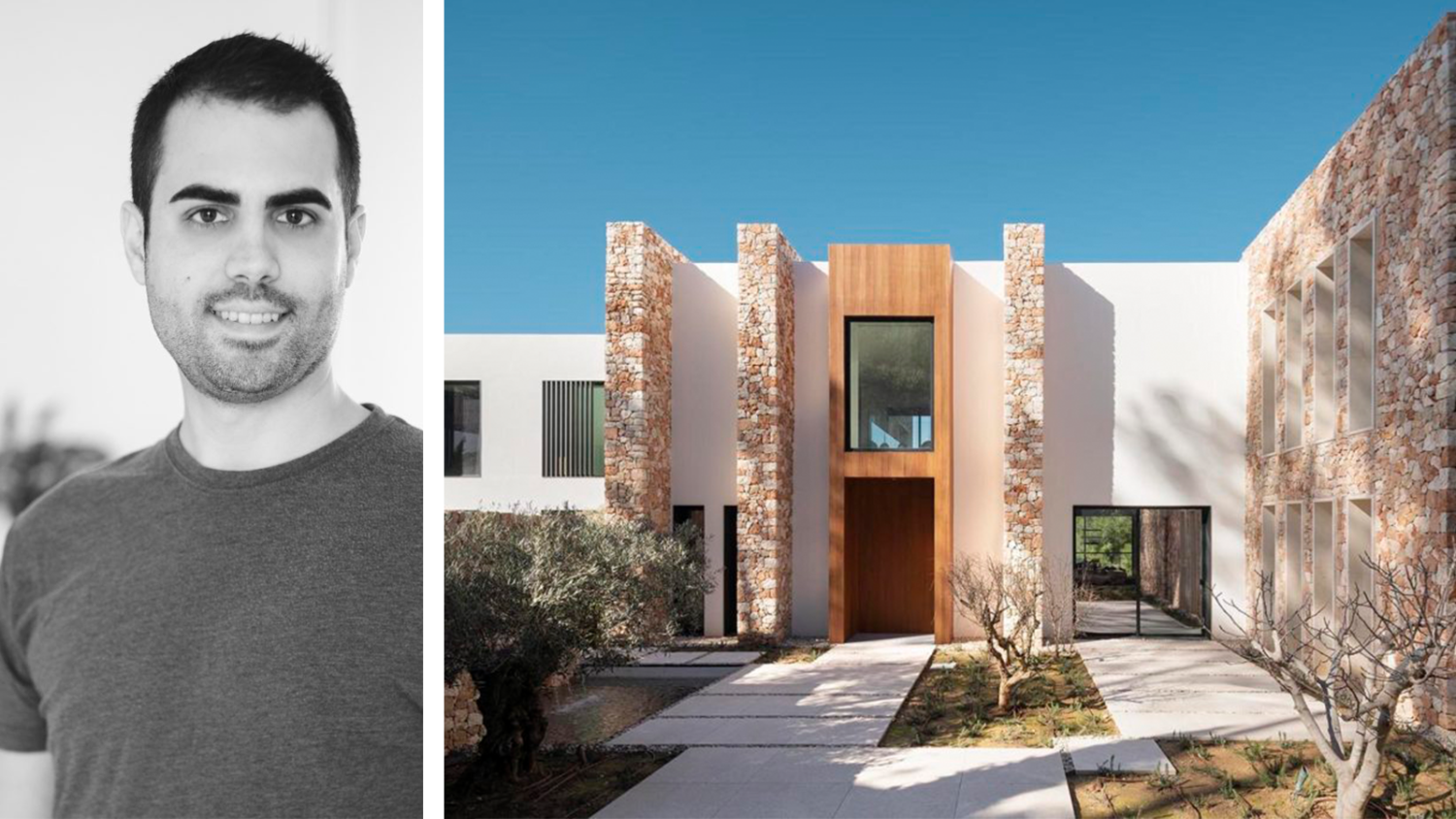Art Sanchez Skates Into Architectural Photography & Videography
I absolutely love cycling, so when I think of Mallorca off the coast of Spain, the first thing pops into my mind is the winter training camps for all the professional racing teams. To be honest with you, I’ve never really made much of a connection between architecture and Mallorca — an island that is only 1,405 square miles.
That all changed when I came across Arturo Sanchez, an architectural photographer and videographer, who hails from the small Mediterranean island. Art’s images and videos are clean, well thought out, and his work in both mediums compliment each other perfectly. A talented artist and smart businessman, I’m eager to share Art’s interview with you, where you’ll learn a bit about his love of inline skating, his jump from real estate to architectural photography, how to dip your toe into shooting videos, and a few new techniques!
Veeral: Hey Art, thanks for taking the time for this interview. To start off with, why don’t you tell us a little about yourself and your journey into architectural photography?
Art Sanchez: Many thanks for interviewing me. I’m an architectural photographer & videographer based in Mallorca, Spain. Since I was young, I have always had an interest in the arts — especially drawing and painting — which organically evolved into photography. During my teens, my friends and I were into aggressive inline skating. Around this time, my dad gave me a manual film camera which started my interest in photography. In order to teach myself photography, I started to photograph my friends at the skate park. I was enjoying photography a lot, so I enrolled in a course to study arts and photography. I disliked the old process of developing black and white film, so I didn’t learn much.
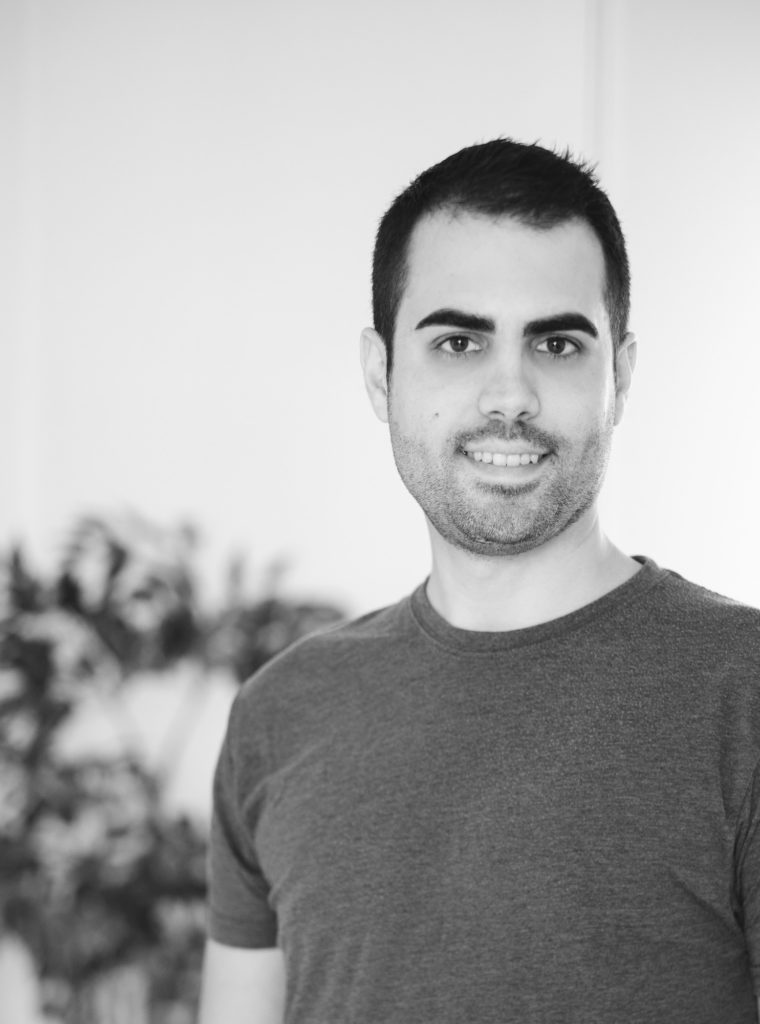
Upon completing my studies, I assisted a London based real estate photographer in Mallorca who was very experienced in strobing and post-production techniques, which were of immense value to me later in my career. After assisting, I got a job as a photographer in a local studio for a couple of years, where I was photographing just about anything from babies to sports. In 2008, as the recession hit globally, I decided to go freelance and shoot homes for real estate. While this may seem risky to some, I was still living with my parents at the time, so making the transition ended up working out well.
My focus in real estate photography was shooting luxury rental homes. I spent about six years doing real estate photography, and it gradually evolved into residential architecture and hospitality photography. I was able to take advantage of the access my realtor clients gave me to certain properties, and practice photographing them in the best way possible — even if I wasn’t getting paid for the extra time it took. Doing this, plus photographing a few free projects for my portfolio, allowed me to make a smooth transition into the next phase of my career.
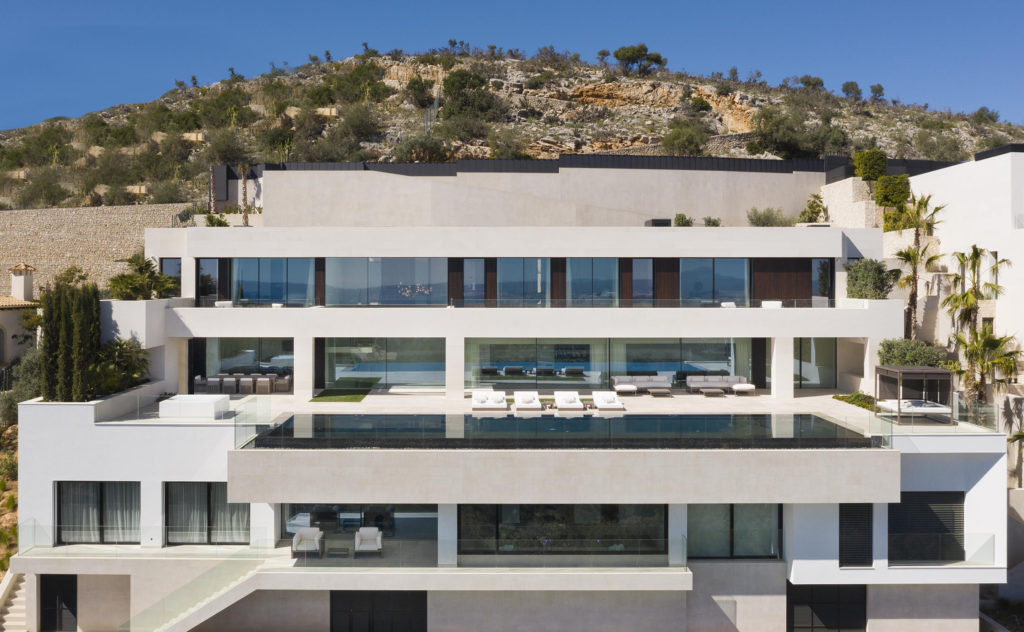
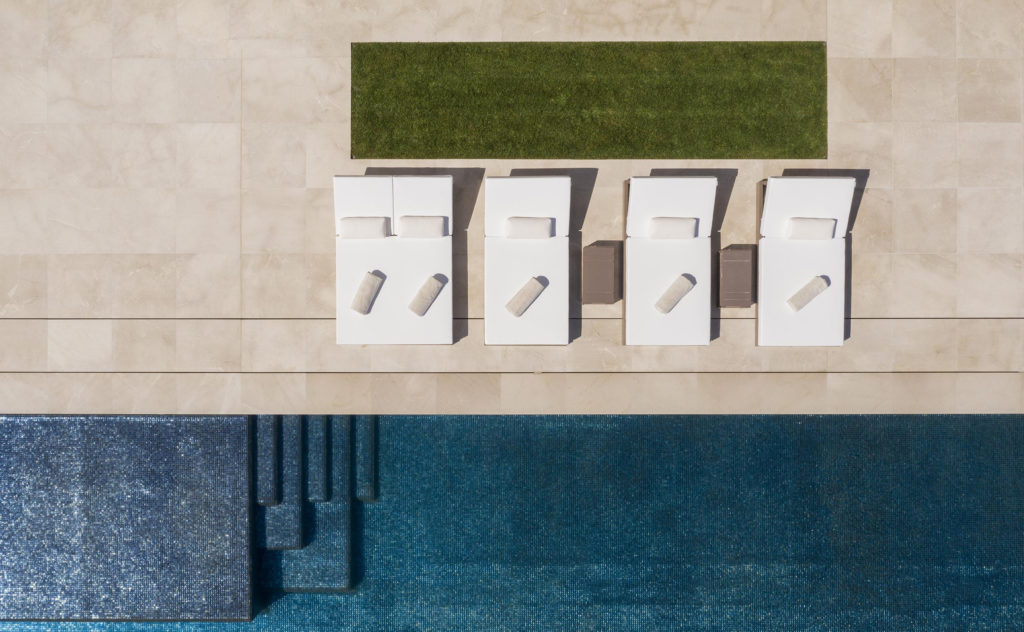
A few years ago, you and Miguel de Olaso were attributed to inventing a technique called QuickLapse on your production of an architectural motion piece for Son Brull Hotel. Can you share the details of what the quick lapse process involved in this project?
Back in 2014, I pitched the idea of making architecture films to Macgregor (Miguel de Olaso). Nobody was really making them, besides the lackluster real estate video tours. One of my main sources of inspiration was Alex Roman’s The Third & The Seventh film, which was done entirely in CG using 3DS Max and VRay.
Macgregor was the one that invented the Quicklapse technique when he found himself with no backup video camera on a trip to Iceland. A Quicklapse is obtained by shooting a burst of still images which are then interpolated in After Effects to fill in the missing frames to look like a regular video. It works for architecture, but Quicklapse can’t be used for filming people or quick action. We used Quicklapse to maximize our current equipment and to get the quality of still architecture photography, but in motion. The experiment was fun and dozens of photography and video blogs worldwide posted it because there wasn’t any 8K camera systems at that time.
That leads me to my next question. In addition to architectural photography, you are also doing architectural videography. What was your motivation for moving into videography? How did you go about learning this new skillset?
I started real estate photography at the same time that the DSLR video revolution happened. Making my images move was always in the back of my mind. In the beginning, It was really hard for me to translate architecture photography into motion. It was much harder than I expected. So, for the first two or so years, I was behind the scenes, learning online, practicing and purchasing video equipment to experiment by myself — without offering it to clients.
I like videography as much — or more than — photography, so I was really motivated to take it forward and be able to offer a solid video service to my clients. The Quicklapse technique from the previous question was fun and I learned so much from it. However, I immediately realized that it was not so practical for real video works. I think the point of architecture videos is to compliment the photographs of the project — to give another dimension and point of view, and to have more opportunities to seduce the viewers. The look of a cinematic image doesn’t require perfection as the still photography does, and sometimes the error is when comparing both mediums with the same criteria.
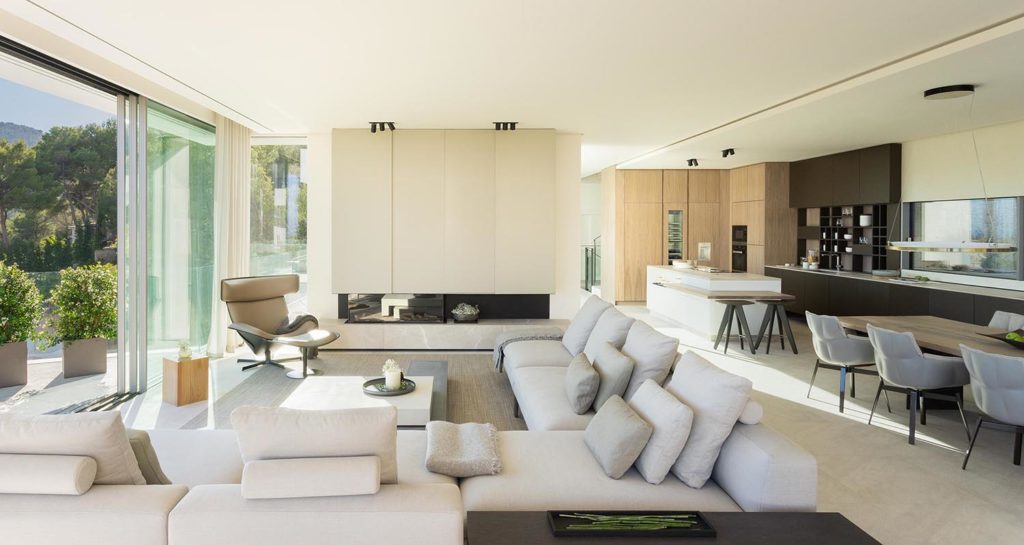
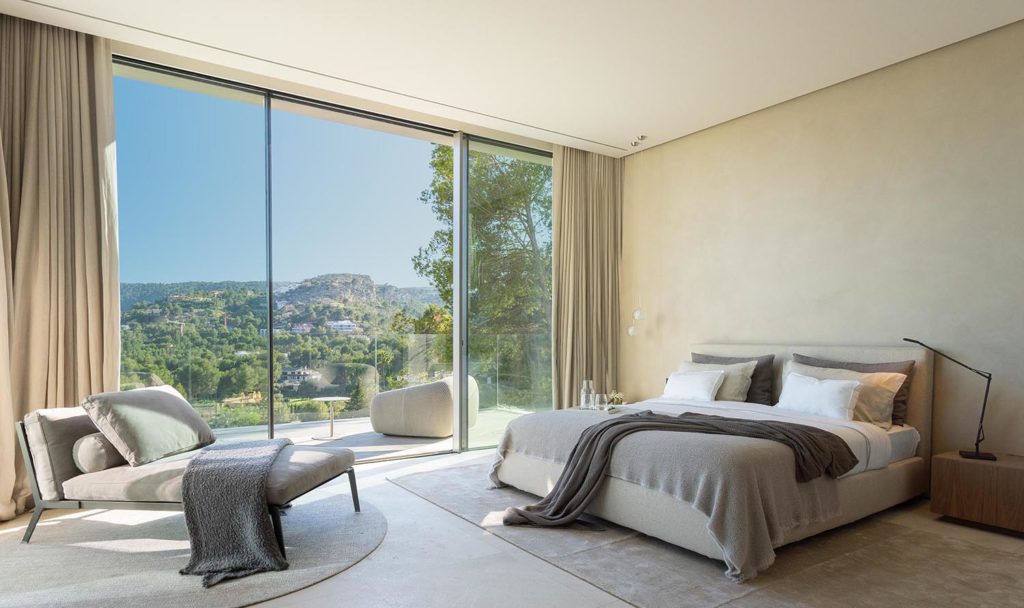
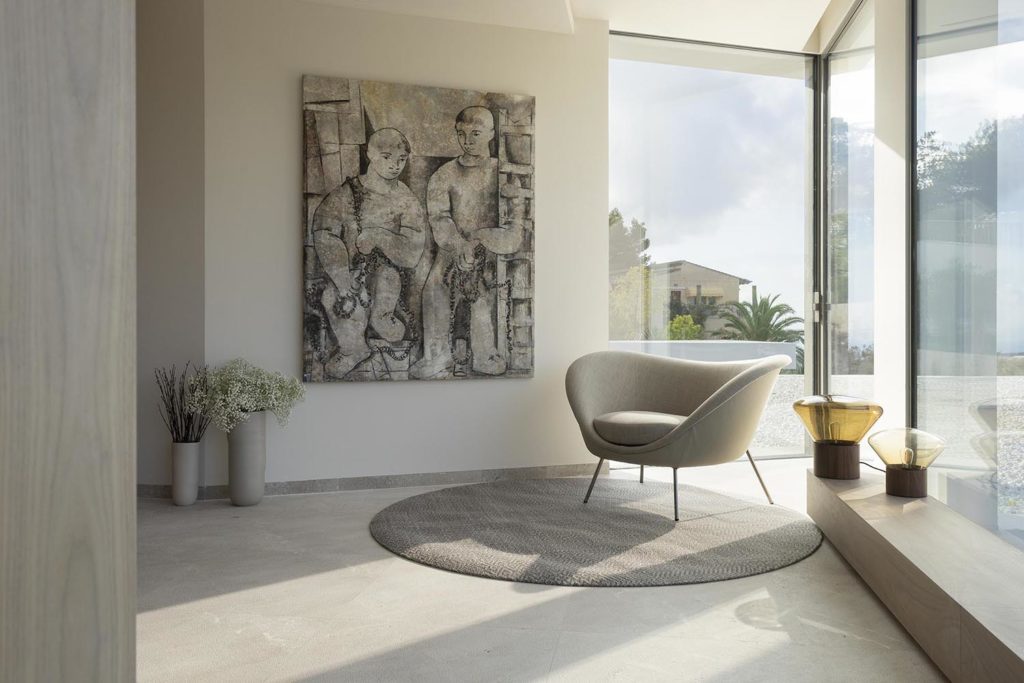
In one of your behind the scenes videos, I saw you using a Segway! What other videography equipment do you use when filming?
My video equipment has been changing and evolving during these first years, and right now I’m using the following gear:
- Two Canon C200 bodies (because of the colour science, internal ND’s and raw capabilities),
- A few APS-C Canon and Sigma lenses
- A motorized Segway
- A mSlider multi-axis motion control system which is the most useful piece of equipment that I own for video.
- Last but not least, one of the most important tools I use to get the best image quality in my films is Davinci Resolve. I have used Final Cut and Premiere before, but Resolve makes a huge difference in colour grading with its 32bit workspace and its suite of precise tools.
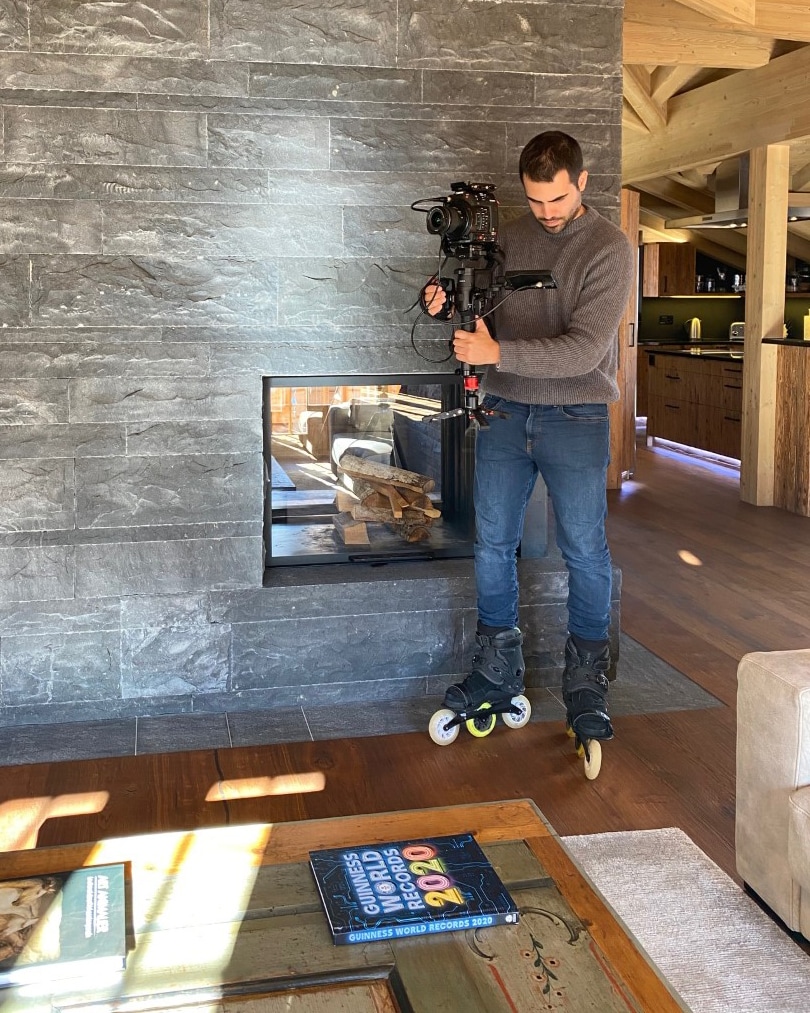
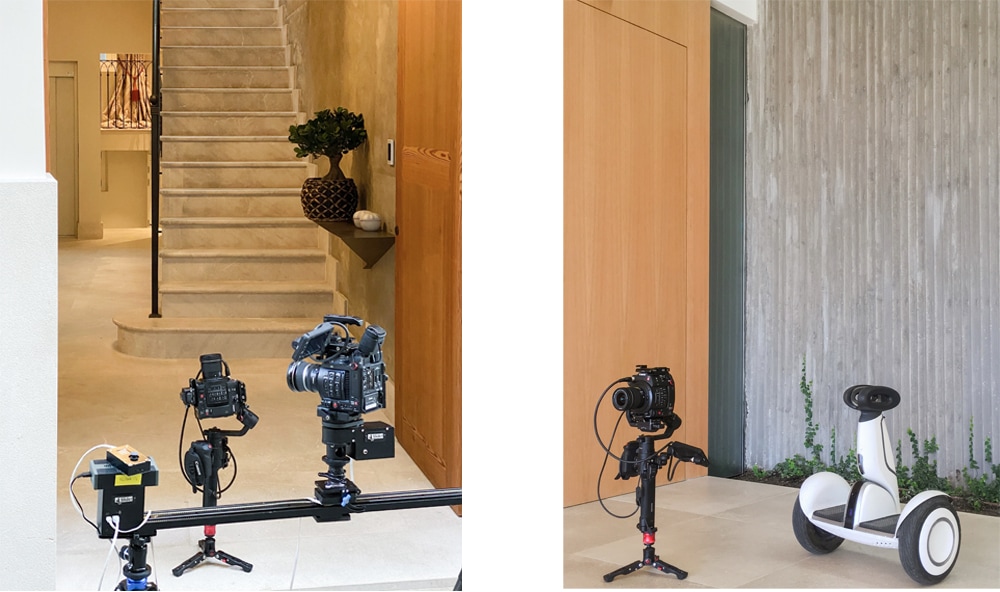
If someone is trying to get into filming architectural films, what would be the bare minimum equipment they would need to get started?
In my opinion and especially nowadays, you don’t need a lot of equipment to get started in architecture and interior design videography. A camera with Log recording is essential to get the maximum dynamic range of the sensor. If it has RAW video capabilities, then even better! 4K footage is necessary to be able to crop, as correcting the perspective is a bit more complex in motion than it is in still photography. 24-25fps would be used for general filming and with the slide, and 50-60fps for more dynamic moves with the crane or gimbal.
Gimbals are so popular, but it’s important to take care of the final output and to differentiate the look of your architectural film from the look of most typical real estate videos. The same goes for aerial images. I think that some videographers overuse drones. The key to a great architectural video is the mix of details, slow movements with a slider, and longer movements with a gimbal.
The equipment that I would recommend to someone who wanted to start architectural film making in early 2020 would be:
- A Blackmagic Pocket 6K, a Canon 1DX mk III for existing Canon FF owners, or a Nikon Z6 with Atomos recorder for existing Nikon users.
- Tokina 11-20 2.8 (wide and fast)
- A video fluid head with a regular photography tripod
- The free version of Davinci Resolve
I have realized that tilt-shift lenses are not that essential for motion as they are for photography, as the spaces are revealed by moving the camera. Moreover, my cinema cameras are Super 35(aps-c) format and I can’t get the full coverage with, say, 17 TS-E tilt-shift lens. For videos, I prefer to use fast glass because it is not possible to do long exposures and you need to respect the 180º shutter angle mode.
I do plan to unify my photo and video lenses at some point in the future. That will most likely happen when a full-frame Canon RF mount cinema camera comes out, hopefully alongside new TS-E lens designs with RF mount.
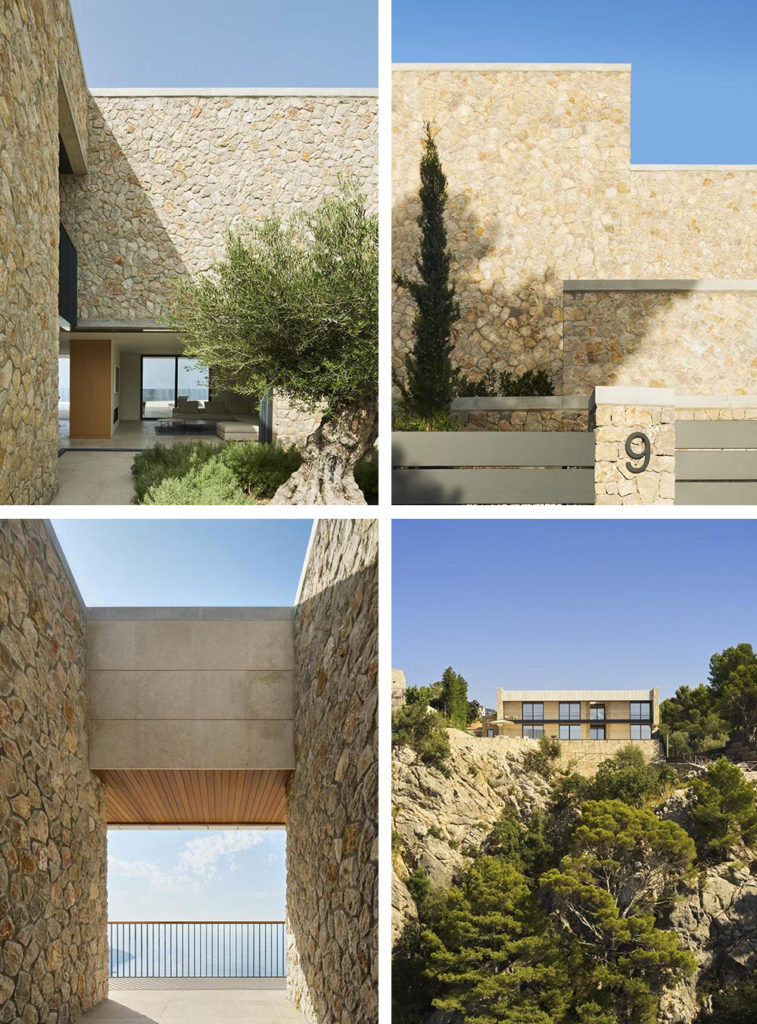
When you go on shoots that involve both photography and videography, how do plan for both mediums?
Typically for all my shoots, I spend about a half-day in pre-production conducting site visits. These involve determining the key perspectives the architect is interested in as well as how the house responds to sunlight. This allows me to build up a shooting schedule for both photography and videography, which is especially important if I’m doing a timelapse.
The key to architecture films is the use of timelapses for breaking the rhythm in the editing and for showing the light changing at a property. If you’re already used to architecture photography, it’s not that hard to predict the light movement and set up a time-lapse. I have experimented a lot in the past, but nowadays, when the client needs photography and video, I shoot them separately on different days. On occasion, if I see good shadow play compositions during my photography session, I will set up an additional camera to perform a timelapse so that I can be more efficient during the actual video shoot.
Recently, I have been contemplating bringing a video operator onboard. This would allow me to focus on the photography aspect whilst being a director on the video component as the operator does the motion part concurrently. Multiplying the shooting days when doing photography and motion is a bit tricky sometimes, but it’s a thing that I need to figure out. Being a photographer first has helped me a lot and I don’t know how a “regular” filmmaker without the eye of an architectural photographer could figure this out.
As I had mentioned earlier, I do prefer videography over photography because it gives me additional options in creating content. For example, I can create corporate profile videos for architects or even documentary-style short films too.
I encourage other arch photographers to explore this field, as they have a huge advantage over the rest of the videographers or filmmakers in their ability to be able to find hero compositions in architecture. Even if they don’t plan to offer this service to their clients, I think it’s very valuable to have some basic video and editing skills for self-promotion like behind the scenes content on Youtube or other social media platforms. I am often inspired by the work of another Spanish filmmaker, Alfonso Calza, who often creates architectural videos for one of Spain’s top architects, Fran Silvestre. Alfonso’s videos are thematically similar to Portuguese architectural photographer, Fernando Guerra.
Actually, one of my goals is to release an online architecture film course in the near future — similar to Mike Kelley’s Where Art Meets Architecture series.
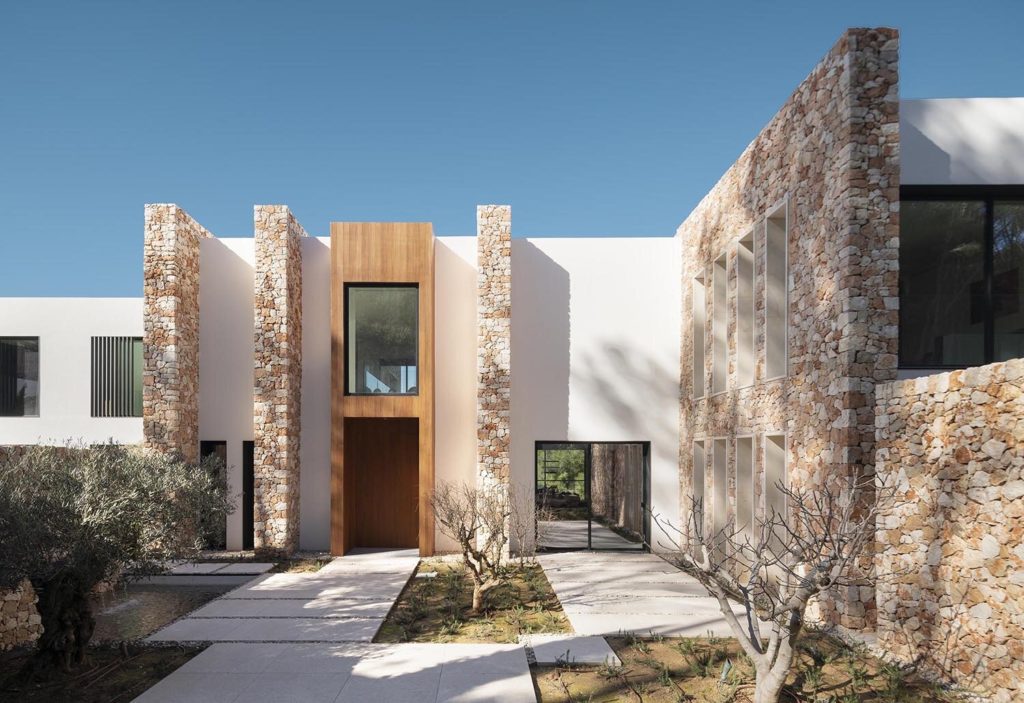
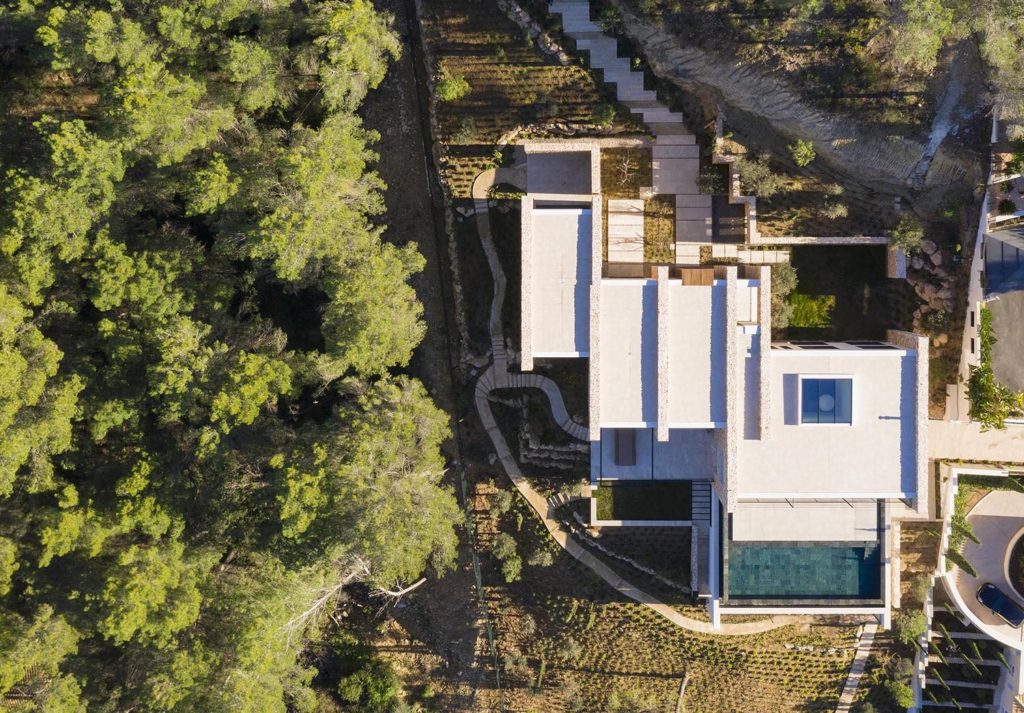
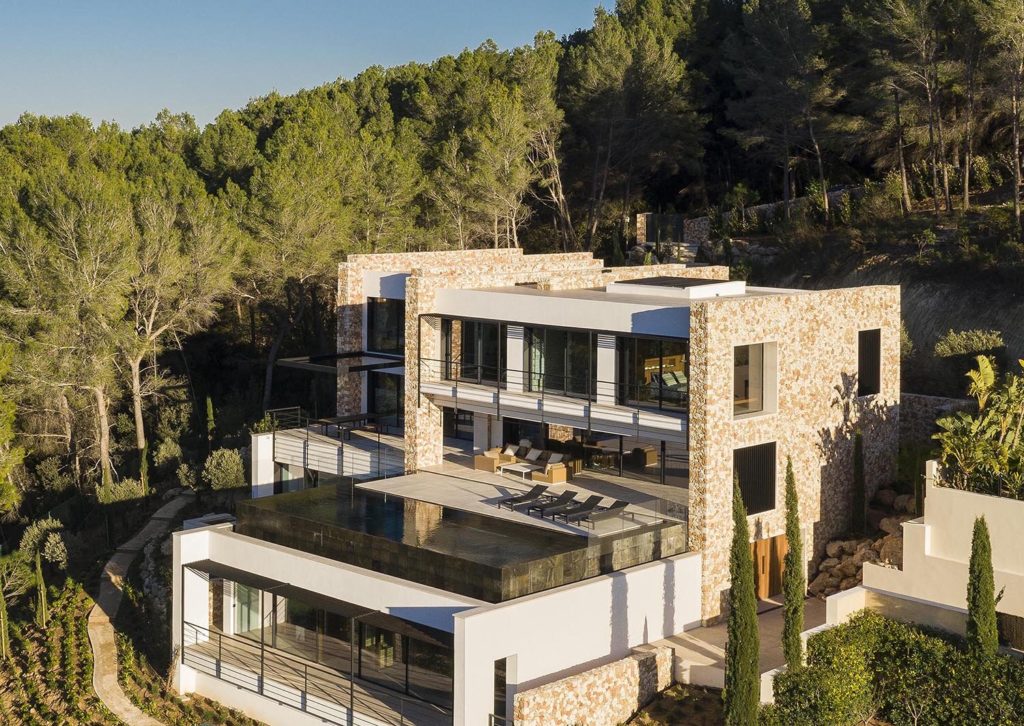
On your Instagram stories, you have a very unique camera setup for your architectural photography. Can you talk us through it?
Yes! Everyone freaks out when they see that Cambo setup.
I have used tilt-shift lenses in the past but I have always missed using zoom lenses like those in my real estate photography days. I know that in architectural photography we don’t need to rush, but personally I like the intuitive way that a zoom lens instantly composes a shot.
So, I paired a Cambo Actus G technical camera and adapter together with large image circle lenses (Canon 11-24, Tokina 24-70, etc). I had to modify the lenses a bit in order to make them work with this system. I’m using an APS-C mirrorless body — specifically a Fuji X-T3 — to take advantage of the image circle of the lenses when shifting. In essence, this setup is like a technical camera with an MF back, but with Canon mount zoom lenses. The shifting range is huge, in some cases as much as 25mm in terms of full frame shift measurements.
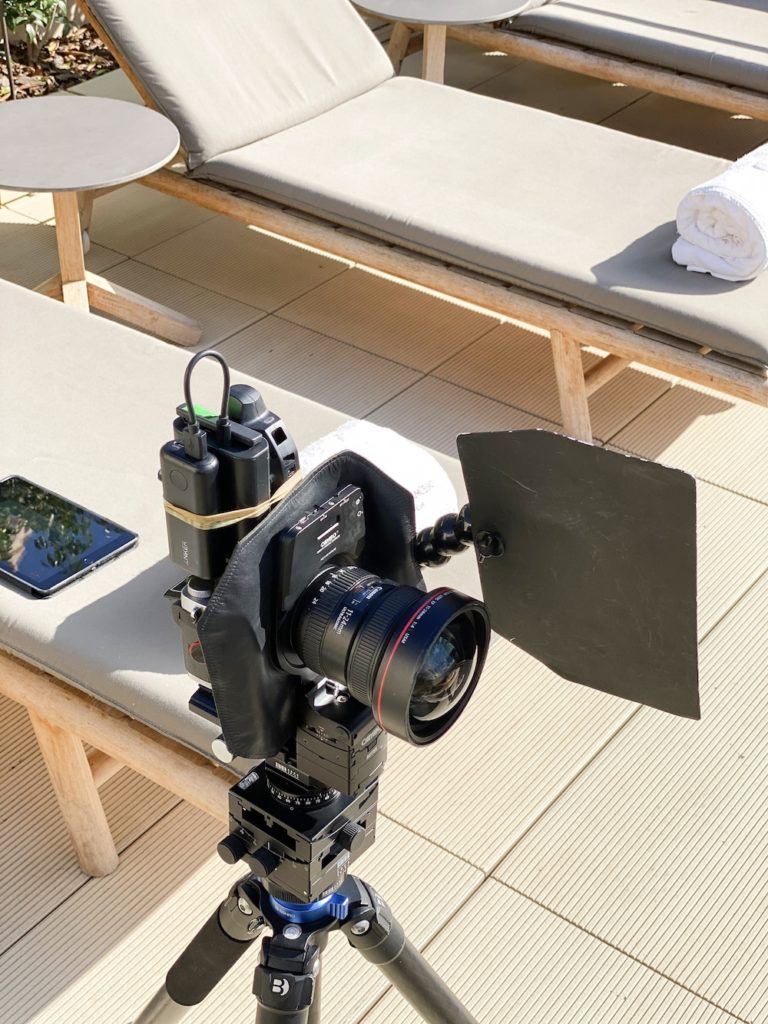
I love this setup for multiple reasons:
- I can use zoom lenses that have the ability to shift to cover all focal lengths
- Multi-axis shift capabilities
- The camera can move separately from the lens which is ideal for stitching
- Switching between landscape and portrait orientation is very easy
- It’s easy to pack it in the bag without dissembling it every time
- The image quality is surprisingly good
I will also add that I feel that a lot of photographers are obsessed with pixel peeping, but usually the clients are not interested. In my opinion, the majority of the current cameras are more than enough to produce excellent results. I have heard a few professionals that justify using medium format high-resolution sensors to “preserve their image standards over the years”, but I think the first concern for those people would be to create an atemporal style in their images that could make their images sell today and in 30 years — not just preserve them by the resolution numbers. Don’t get me wrong, medium format systems are exceptional especially with the latest CMOS technology, but some people are obsessed with this tiny part of the process.

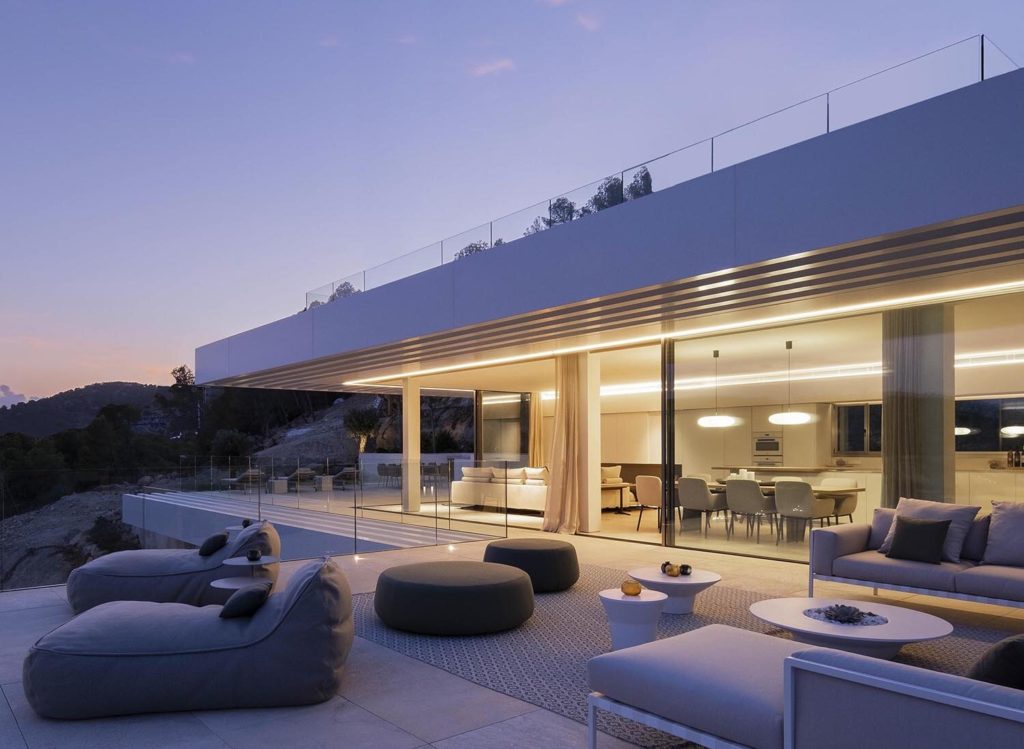
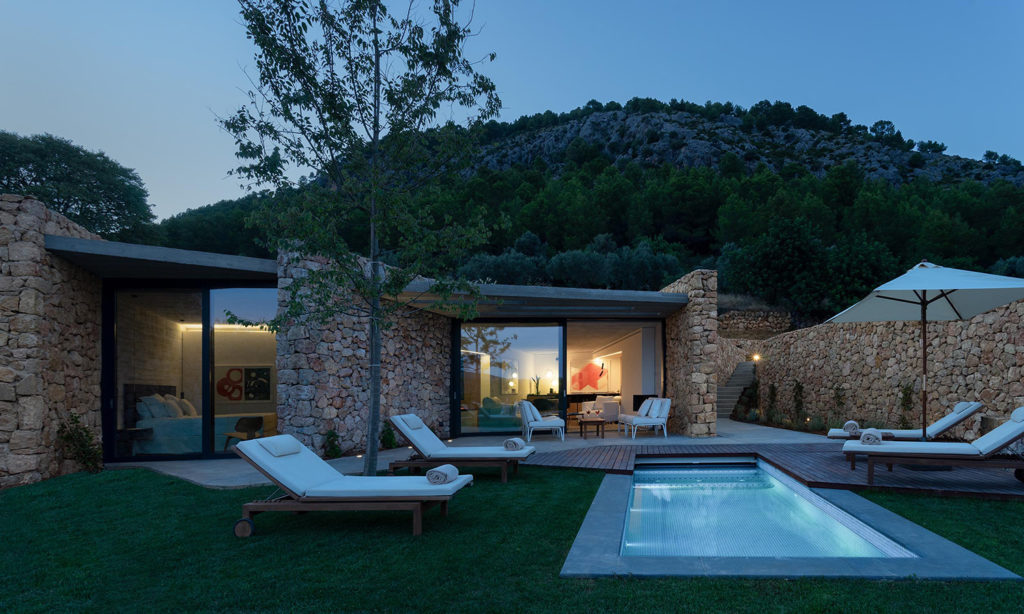
What has been your favourite architectural/interiors shoot to date? What were your favourite aspects or elements of the shoot?
I’ll answer this in two parts. Firstly, my favourite architectural video project would have to be SV4 by David Domínguez because the house was very palatial and had a very minimalist style. I love the results of this video because I had filmed it in winter/springtime and the light wasn’t as harsh as it is like in summer.
My favourite architectural photography project would be the Human Body project by Rai Pinto Studio. This project was very different from photographing or filming residential architecture, as at that time, I didn’t have the experience photographing projects including people. It was very fulfilling and fun to work with kids in this hospital in Barcelona.
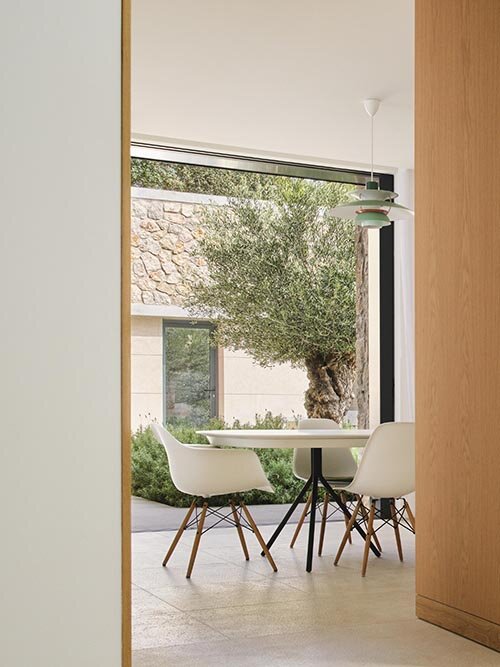
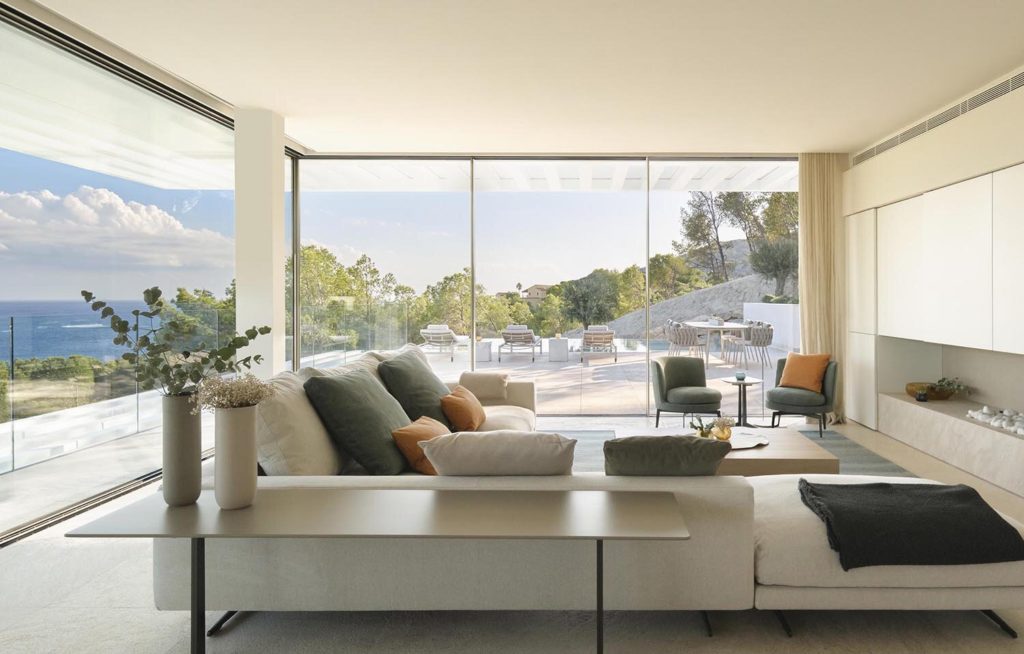
Last question! What would be your dream project to photograph, and which architect in the world you would like to work with? Why?
I love the big architecture projects that Chinese architects are doing. Sometimes I daydream about producing images for MAD Architects(Ma Yansong) from Beijing, especially cinema. One day, I would like to be the video version of Joe Fletcher!
